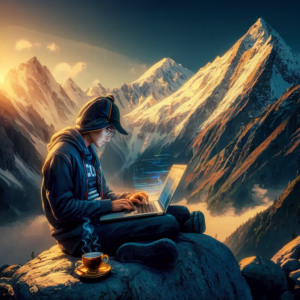Microservices architecture has become increasingly popular in the software development world due to its ability to break down monolithic applications into smaller, independently deployable services. One of the key challenges in implementing microservices is establishing effective communication between these services. There are several communication patterns available, with REST and gRPC being two of the most prominent ones. In this article, we’ll explore various microservices communication patterns, including REST and gRPC, to help you make informed decisions when designing your microservices-based system.
Understanding Microservices Communication
In a microservices architecture, individual services communicate with each other to perform specific tasks and create a cohesive application. This communication can take various forms, and selecting the right communication pattern is crucial for building a robust and efficient system.
RESTful APIs
Representational State Transfer (REST) is one of the most common communication patterns for microservices. RESTful APIs use HTTP as the transport protocol and rely on standard HTTP methods such as GET, POST, PUT, DELETE, and PATCH to perform operations on resources.
Advantages of using REST:
- Simplicity: REST is easy to understand and implement. It uses a simple and widely adopted communication protocol, HTTP, which is supported by many programming languages and frameworks.
- Statelessness: Each request to a RESTful service is independent, making it easier to scale and maintain. This statelessness simplifies the debugging and troubleshooting process.
- Compatibility: RESTful services are platform-agnostic, allowing different services to be written in different programming languages and run on different platforms.
However, REST does have its limitations, such as over-fetching and under-fetching of data and the lack of built-in type safety, which can lead to runtime errors.
gRPC
gRPC, short for Google Remote Procedure Call, is another popular communication pattern for microservices. It is a high-performance, language-agnostic framework that uses Protocol Buffers (Protobuf) for defining service contracts and HTTP/2 for transport.
Advantages of using gRPC:
- Efficiency: gRPC is known for its efficiency and low latency. It uses binary serialization (Protobuf) and multiplexing over a single connection, reducing network overhead.
- Strong Typing: gRPC enforces strong typing by generating code for request and response objects. This results in better compile-time validation and improved reliability.
- Bi-directional Streaming: gRPC supports both unary and bi-directional streaming, making it suitable for real-time communication and long-lived connections.
While gRPC offers several advantages, it may be seen as more complex to implement compared to REST. Also, it may not be the best choice for public-facing APIs due to its less human-readable message format.
Other Microservices Communication Patterns
Besides REST and gRPC, there are other communication patterns you can consider for your microservices architecture:
1. GraphQL
GraphQL is a query language for your API, allowing clients to request only the data they need. It provides a flexible and efficient way to interact with microservices by allowing clients to define the shape of the response.
Advantages of using GraphQL:
- Client-Driven: Clients can specify their data requirements, reducing over-fetching and under-fetching of data.
- Single Endpoint: GraphQL typically exposes a single endpoint, simplifying client interactions.
2. Message Queues
Message queues such as RabbitMQ, Apache Kafka, and Amazon SQS enable asynchronous communication between microservices. They are particularly useful for decoupling services and handling tasks that can be processed in the background.
Advantages of using message queues:
- Asynchronous Processing: Allows for handling tasks independently and scaling services more easily.
- Fault Tolerance: Messages can be retried, ensuring robust communication.
3. WebSockets
WebSockets provide full-duplex, bidirectional communication channels over a single, long-lived connection. They are suitable for real-time applications and can be used in conjunction with other communication patterns.
Advantages of using WebSockets:
- Real-time Updates: Ideal for applications that require live updates and collaboration.
- Reduced Overhead: Maintains a persistent connection, reducing the overhead of opening and closing connections.
Choosing the Right Pattern
Selecting the most suitable communication pattern for your microservices architecture depends on your specific project requirements and constraints. Consider the following factors:
- Performance: If low latency is a top priority, gRPC might be the best choice.
- Complexity: For simple and straightforward communication, REST may be the right fit.
- Client Requirements: If clients need flexibility in data retrieval, GraphQL could be a good option.
- Real-time Updates: When building real-time applications, consider WebSockets or a combination of patterns.
- Asynchronous Processing: Use message queues for tasks that can be offloaded to background processing.
In many cases, a combination of communication patterns might be the optimal solution, allowing you to leverage the strengths of each pattern where they fit best.
Conclusion
Microservices communication patterns are a critical aspect of designing a successful microservices architecture. REST, gRPC, GraphQL, message queues, and WebSockets are all powerful options, each with its own set of advantages and limitations. By carefully evaluating your project requirements and constraints, you can make informed decisions to ensure that your microservices communicate effectively and efficiently, leading to a robust and scalable system.





